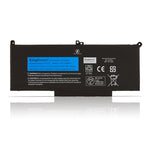You have no items in your shopping cart.
What to do if MacBook Pro keyboard not working?

When your MacBook Pro keyboard stops working, you may find that none of the keys work, or some keys work. If the Touch Bar doesn't work, it could be a software issue.
You'll need to try fixes, such as cleaning it, checking for updates, and removing potentially problematic apps, to get your keyboard working again. Most of these fixes also apply to the MacBook Air keyboard.
What Causes a MacBook Pro Keyboard to Stop Working?
The most common causes for a MacBook keyboard to stop working are dust and other contaminants. If you have a MacBook with keys using Apple’s butterfly keyboard mechanism, even the smallest amount of dust contamination can cause problems. Other contaminants, such as food and various liquids, can also prevent a Mac keyboard from working correctly.
Apple's butterfly keyboards were such a problem; Apple had to issue a Keyboard Service Program for the MacBook, MacBook Air, and MacBook Pro.
The most common reasons a MacBook keyboard stops working include:
●Dust and other contaminants
●Incorrect software settings
●Problematic apps
●Bugs and glitches
●Broken hardware
How to Fix a MacBook Pro Keyboard That Isn't Working
If your keyboard stops working, the first step is to clean it. If that doesn't work, you'll need to connect an alternate keyboard and try some other fixes.
In the worst case, please contact Apple for professional help. Do not attempt any advanced repairs or disassembly yourself, as Apple will fix some of these issues for free.
Here’s how to fix a MacBook Pro keyboard that has stopped working:
1.Clean the keyboard.
Dust and other debris represent the most common cause of malfunctioning MacBook keyboards, so start by cleaning your keyboard to the best of your ability. Here’s Apple’s recommended procedure:
●Hold the MacBook so that the base is at a 75-degree angle with the floor or table.
●Using compressed air with a straw to guide the pressurized air, blow between the keys in a left-to-right and top-to-bottom pattern.
●Rotate the MacBook so that the right side is facing down, and still, at about a 75-degree angle.
●Repeat the same left-to-right and top-to-bottom blowing pattern you used before.
●Rotate the MacBook again, so the left side is facing down, and still, at a 75-degree angle.
●Repeat the same blowing pattern you used before.
●If you see any visible debris on the keyboard at this point, use a vacuum with a soft-bristled attachment to finish cleaning.
2.Plug in the MacBook.
If your battery is low, the keyboard may not work, and you may not see a low battery alert. Wait for the MacBook to charge and then check to see if the keyboard works.
3.Check for updates.
Connect a USB or wireless keyboard and perform the standard procedure of checking for updates. If your MacBook needs any driver or operating system updates, update them, and then see if the keyboard works.

Apple MacBook A1496 laptop battery-Kingsener|BatteryMall
4.Remove recent apps.
If you installed one or more apps right before this problem started, it might be causing a conflict. Uninstall any apps you recently installed, restart your MacBook, and then check to see if the keyboard works.
5.Restart the Touch Bar.
If the Touch Bar is the part of your MacBook Pro keyboard that isn’t working, you can usually use the terminal to get it working again. Here’s how that works:
●Type terminal into Spotlight, or open it via Finder > Applications > Utilities.
●With the Terminal open, type sudo pkill TouchBarServer; and press enter.
●Type sudo killall “ControlStrip”; and press enter.
●Enter your password and press enter.
●The Touch Bar shuts down and restarts.
6.Turn off Slow Keys.
If this function is on, you have to hold down each key longer than usual before it registers. That can make it seem like the keyboard doesn’t work at all if you’re only pressing each key for a short amount of time. Here’s how to turn it off:
●Open the Apple menu.
●Navigate to System Preferences > Accessibility > Keyboard > Hardware.
●Make sure Slow Keys isn’t on.
7.Turn off Mouse Keys.
This setting can cause problems if it’s accidentally turned on. To turn off Mouse Keys:
●Open the Apple menu.
●Navigate to System Preferences > Accessibility > Pointer Control > Alternate Control Methods.
●Make sure Mouse Keys isn’t on.
8.Check the keyboard layout setting.
If you have the wrong keyboard layout set, the keys won’t function as expected. Here’s how to check:
●Open the Apple menu.
●Navigate to System Preferences > Keyboard > Input Sources.
●Select Show Input menu in menu bar.
●Open the Input menu and select the correct keyboard layout for your region and language.
9.Reset the System Management Controller (SMC).
If there’s a problem with your MacBook’s SMC, it may result in the keyboard not working correctly. Resetting the SMC usually takes care of the problem.
10.What If Your MacBook Keyboard Still Doesn’t Work?
If your keyboard still doesn’t work after you attempt all these fixes, or it’s just specific keys that don’t work, you need to seek professional help from Apple. Apple fixes some keyboard issues at no charge due to defects in the butterfly switch mechanisms, but customer support can tell you whether your MacBook is covered.

Kingsener A1437 11.21V 74Wh Laptop Battery For APPLE MacBook Pro13 inch Retina A1425 (Late 2012, Early 2013) 020-7653-A With tools
MacBook FAQ
How do you reset an external MacBook Pro keyboard?
Disconnect and reconnect the keyboard via the USB cable, making sure the connector is securely slotted into the USB port when it's plugged back in. You can also try plugging the keyboard into a different USB port.
How do you turn on backlights on a MacBook Pro keyboard?
One way to turn on backlights is to press the increase brightness key or the decrease brightness key.
You can also go to the Control Center, select Keyboard Brightness, and move the slider back and forth. Or, in the Touch Bar, expand the Control Strip and tap increase brightness or decrease brightness.
How can you lock the keyboard on a MacBook Pro?
To lock your MacBook Pro keyboard, you'll need to put the computer into sleep mode or lock the screen.
To lock the screen, use the keyboard shortcut Control+Shift+Power.
To put the computer to sleep, you have three options: close the lid, use the keyboard shortcut Command+Option+Power, or select Sleep from the Apple menu.
If this article still doesn't help your laptop battery, you can buy a new battery at BatteryMall.com.
If you want to learn more about batteries, please visit:BatteryMall.com/blogs/support









comments (1)